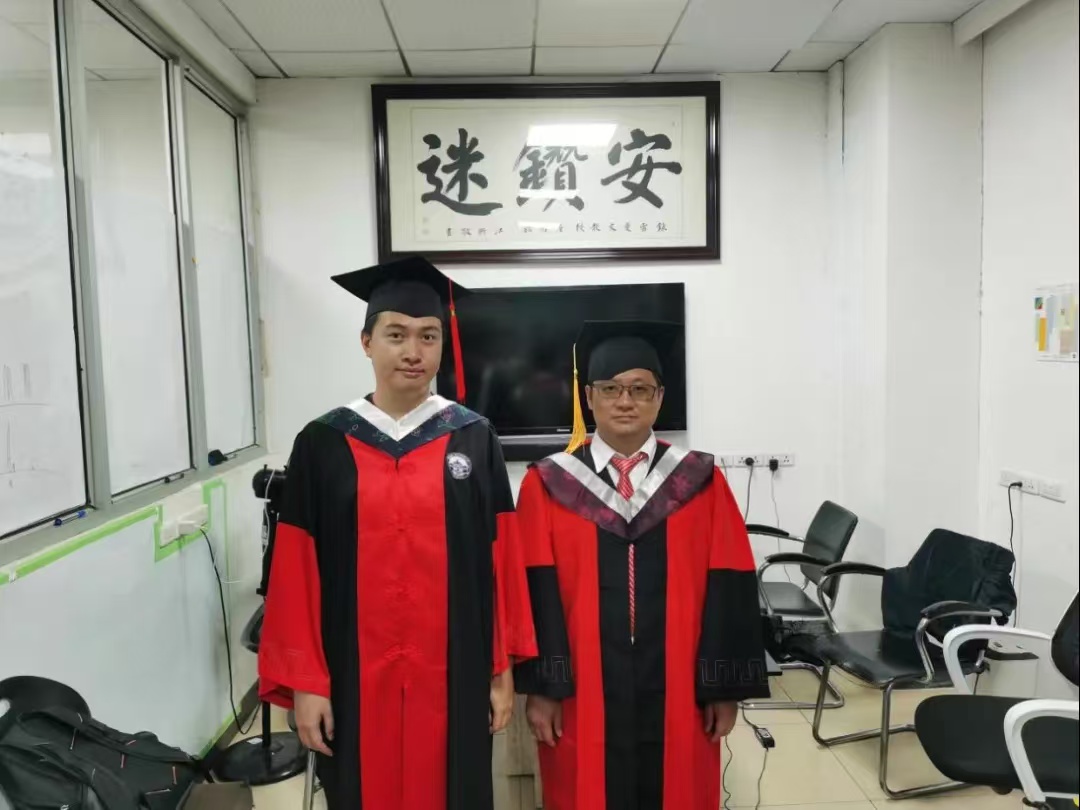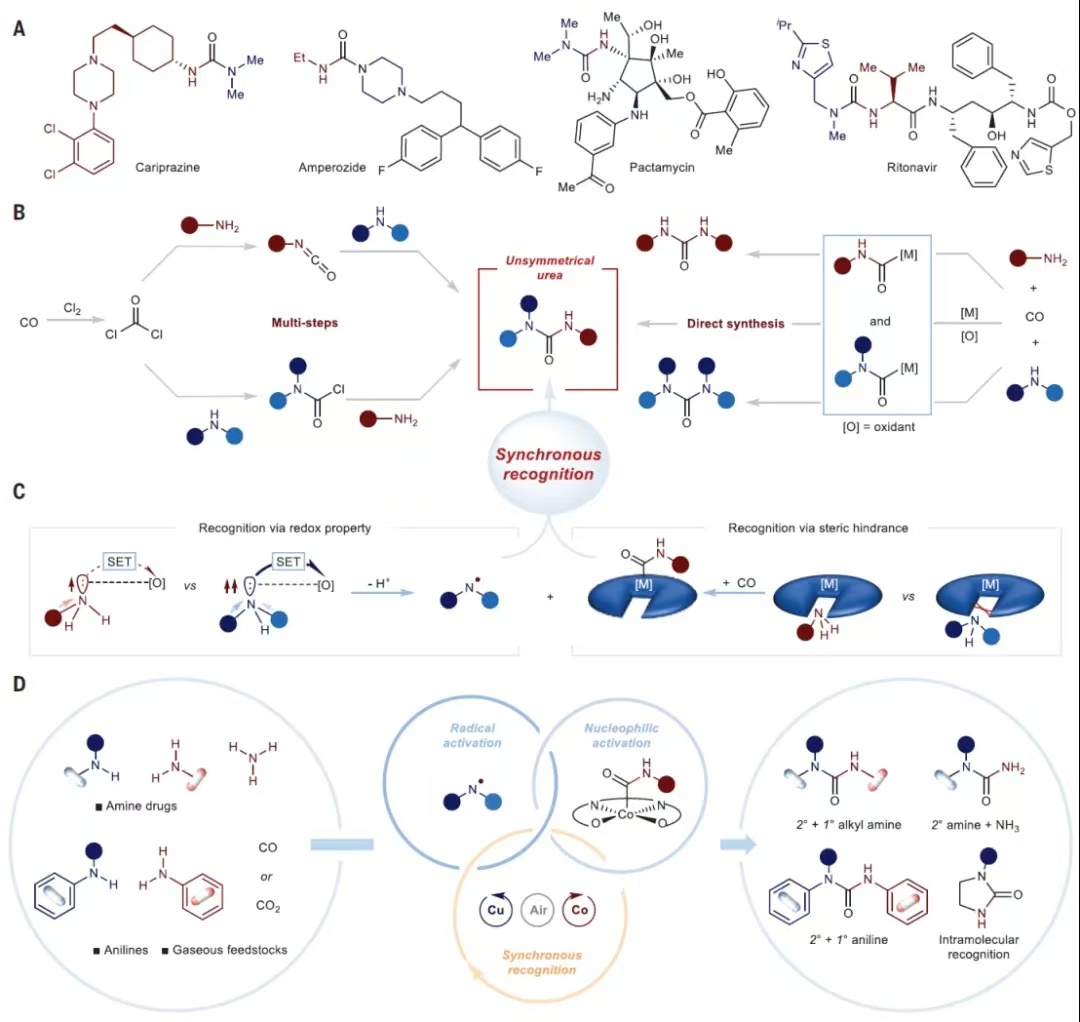On November 15, Science published online the latest research paper of professor Lei Aiwen’s team from the Institute for Advanced Studies of Wuhan University and the College of Chemistry and Molecular Sciences of Wuhan University on catalytic oxidative carbonylation. The title of the paper is ‘Synchronous recognition of amines in oxidative carbonylation toward unsymmetrical ureas’.
Ph.d student Wang Jinhui from the Lanzhou Institute for Chemical and Physics of the Chinese Academy of Sciences, Postdoc Wang Shengchun from the Institute for Advanced Studies of Wuhan University and Prof. Wei Zhihong from the Institute for Molecular Sciences of Shanxi University are the co-first authors of the paper, while researcher He Lin from the Lanzhou Institute for Chemical and Physics of the Chinese Academy of Sciences and Lei Aiwen are the co-corresponding authors.


Wang Shengchun(left)and Lei Aiwen(right)
In 1828, humans synthesized organic urea from inorganic substances for the first time, marking the birth of organic chemistry. Urea compounds have shown wide application value in the fields of medicine, pesticide, material science and polymer due to their unique structure. However, although urea compounds have broad application prospects, their synthesis process faces many challenges. Traditional synthesis methods usually rely on high-risk reagents and require multiple complex reaction steps, resulting in a large amount of pollutants. In order to seek a more environmentally friendly and efficient synthetic route, Lei Aiwen and He Lin 's research group jointly explored a series of electrosynthesis and thermal synthesis to reduce CO2 to CO and achieve high-value conversion, so as to accurately synthesize asymmetric urea compounds.

Lei Aiwen 's research group has studied the mechanism of cultivation for nearly two decades. This study proposes a synchronous and accurate identification strategy, which combines the reactivity of different amines with different metals to identify the intrinsic properties of two amines, so that a variety of amines can be highly selectively coupled in oxidative carbonylation, which solves the key problem that it is difficult to distinguish amines with similar properties in the same catalytic system. The research group studied the single electron transfer kinetics between copper catalyst and primary and secondary amines by in-situ synchrotron radiation technology and electron paramagnetic resonance spectroscopy, revealed the efficient electron transfer between copper catalyst and secondary amines, and found the matching law between cobalt catalyst and primary amines through steric hindrance effect. Therefore, the group has successfully realized the oxidative carbonylation of nearly 40 asymmetric urea derivatives with high selectivity in the same catalytic system and space-time scale, showing the great potential of this method in drug synthesis.
This work has been supported by the key projects of the National Natural Science Foundation of China, the National Key R&D Program, the National Natural Science Foundation of China, the Gansu Provincial Basic Innovation Team, the major science and technology projects in Gansu Province, the Wuhan Science Foundation and the Wuhan University Research Public Service Platform and Shanghai Synchrotron Radiation Facility.
It is reported that this work is the third new achievement of new electrosynthesis technology since the publication of Science in July 2024 and Nature in August.
Link to paper: https://www.science.org/doi/10.1126/science.adl0149
Rewritten by Hu Xinyu


